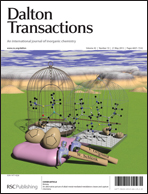Bimetallic core–shell nanocomposites using weak reducing agent and their transformation to alloy nanostructures†
Abstract
An in situ seeding growth methodology towards the preparation of core–shell nanoparticles composed of noble metals has been developed by employing trimethylamine borane (TMAB) as the reducing agent. Being a weak reducing agent, TMAB is able to distinguish the smallest reduction potential window of any two metals which renders selective reduction of metal ions thus affording a core–shell architecture of the nanoparticles. A dramatic effect of solvent was noted during the reduction of Ag+ ions: an immediate reduction took place at room temperature when dry THF was used as solvent however, usage of wet THF (THF used directly from the bottle) brings out the reduction only at reflux conditions. In the case of Au and Pd nanoparticles, preparation was found to be independent of the quality of solvent used. Au nanoparticles are realized at room temperature whereas reflux conditions are required in the case of Pd nanoparticles. This difference in behavior of the monometallic nanoparticles was successfully exploited to construct different noble metal nanoparticles with core–shell architectures such as Au@Ag, Ag@Au, and Ag@Pd. Transformation of these core–shell nanoparticles to their thermodynamically stable alloy counterparts is also demonstrated under very mild conditions reported to date.


 Please wait while we load your content...
Please wait while we load your content...